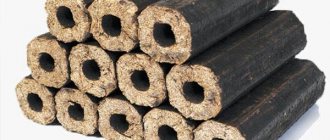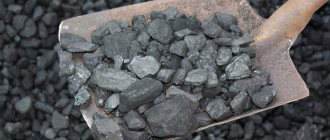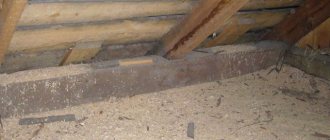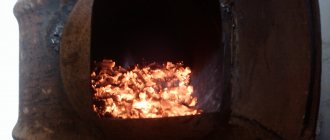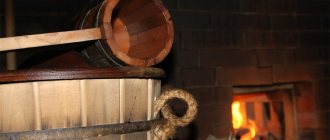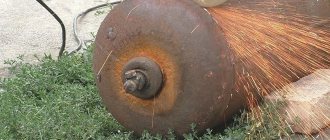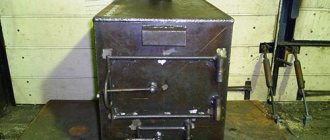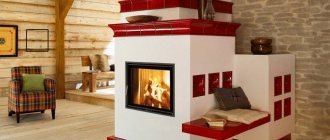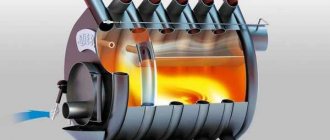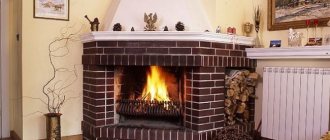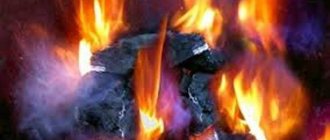Description
Moscow and the Moscow region have a harsh climate - more often cold than warm.
It is necessary to heat the premises with something, not to mention a barbecue or a bathhouse. Basically, gas heating is installed everywhere, but there are still holiday villages and SNTs where there is a need to heat with wood fuel. You can heat rooms, barbecue or heat a bathhouse with anything that burns. So far, most people in Russia use firewood for heating, and coals in the barbecue. But people are increasingly thinking about efficiency and convenience. Therefore, people are slowly starting to turn their attention to fuel briquettes, in particular peat briquettes.
Equipment and raw materials
You can create fuel briquettes with your own hands from various types of human waste. In principle, you can use any substance that can burn normally. What household waste can become valuable raw materials:
- First of all, wood, sawdust and shavings, wood dust, leaves and tree branches. The type of wood does not play a primary role, but it is better that the sawdust be birch, oak, alder or aspen.
- Straw left over from the harvest of wheat or corn.
- Cardboard and paper. It is much easier to make fuel briquettes from paper yourself than from wood, but the paper version will burn out faster.
- Residues and husks of seeds and nut shells can be good but rare raw materials.
The composition of briquettes can be different, and hence the different adhesive capabilities of the mixture. Depending on the raw materials used, clay is added to some briquettes to help bind the elements, usually in a ratio of 10 to 1.
To create homemade fuel briquettes you will need special equipment. You can order an entire line for home production at once by contacting a specific company, or you can assemble the equipment in parts, because the technology for making fuel briquettes is essentially simple.
The whole technology is based on three stages of production:
- The first stage involves the initial preparation of raw materials. The existing waste should be crushed and crushed to the required consistency so that the composition of the mixture is homogeneous.
- The second stage involves bringing the mixture to a ready-made state by drying. The drying machine removes moisture from the raw material.
- The third stage involves the manufacture of products; here fuel briquettes are pressed on a special machine under high pressure and temperature.
How are peat briquettes superior to firewood?
- High density in a small volume. Due to its high density, 1 peat briquette replaces almost a whole small log. At the same time, the briquette burns out for a long time, which makes it possible not to throw new ones into the oven for 5-6 hours.
- Convenient shape. A ton of briquettes takes up 1.5-2 times less volume of firewood.
- Quality. Firewood can often be delivered of poor quality with a high water content (40-50%), but this is not always noticeable. As a result, the useful return from such firewood remains much less than planned. Low-quality briquettes are immediately visible - if the briquettes are damp, they literally crumble in your hands. Thus, a ton of briquettes will be much more efficient than a ton of firewood.
- No need to dry. Firewood, as a rule, needs to dry for 6 months. Briquettes (including peat briquettes) are produced under high pressure from highly dried material and immediately contain an amount of water of 8-9% (standard humidity up to 18%). They can be thrown into the firebox immediately after purchase.
- There is a quarter to a third less ash and soot compared to burning wood.
Peat briquettes NESTRO
NESTRO peat briquettes are an excellent, environmentally friendly fuel intended for combustion in household stoves, solid fuel boilers for heating residential, public, and industrial premises, as well as country houses, cottages, baths, saunas, and greenhouses.
Peat briquettes Nestro
NESTRO fuel briquettes are superior in technical characteristics to classic types of fuel such as coal, fuel oil, and firewood. Briquettes are an energy-stable, waste-free and environmentally friendly type of fuel. Briquettes are suitable for all types of boilers, stoves, fireplaces that burn wood or coal. The heat of combustion of a peat fuel briquette is about 5000 kcal/kg - almost the same as that of coal, and the cost of a peat briquette is much cheaper.
Packaging: 25 kg bags or 1000 kg Big Bag. When purchasing in bulk (20 tons), prices are discussed on an individual basis.
Characteristics:
Briquette dimensions diameter - 75-80 mm Humidity - 12.62% Ash content - 3-6% Thermal conductivity - 5,000 kcal/kg Burning time 10-12 hours!
New generation peat briquettes, compared to other types of solid fuel such as Nielsen wood briquettes and conventional firewood, have a higher heat of combustion and combustion duration. Compared to coal. NESTRO peat briquettes are characterized by lower ash content and sulfur content. The compact shape of the peat briquette allows for the storage of 1 ton of peat briquettes on an area of 1.5 m3. When using peat briquettes in household stoves, good flammability, slow but stable and complete combustion without the release of harmful substances are observed. A small amount of light ash left over from peat briquettes can be used as fertilizer, as it contains about 40 chemical elements.
Recommendations for use:
1) Before starting the combustion process, it is recommended to clear the ash pan and grate from ash to ensure a free and uniform flow of air to the burning fuel.
2) To ignite a peat fuel briquette, you can use wood chips, birch bark, paper, dry ignition products or other specialized products. First you need to light a fire using a small amount of wood, wait until the flame is strong and even. Place a small amount of peat fuel briquette on the firewood, trying to distribute it evenly over the entire area of the combustion chamber.
3) After the peat fuel briquettes have flared up without reducing the air supply to the combustion chamber, it is necessary to add briquettes in several stages on top of the already flared ones. Thus, the fuel is completely loaded into the chamber layer by layer and evenly. Depending on the size of the combustion chamber, the amount of fuel may be different, but briquettes should not fill the volume of the combustion chamber by more than 2/3.
4) When the peat fuel briquettes flare up, reduce the oxygen supply to the furnace firebox to a minimum. Close the vent and combustion door tightly. Adjust the chimney damper so that the peat briquette goes into smoldering mode and stops burning. The use of peat fuel briquettes in smoldering mode is most effective, as it allows you to obtain uniform, constant heat transfer over a long period of time and achieve significant savings in fuel consumption.
5) To maintain constant combustion (smoldering) of peat fuel briquettes, complete burning of the briquette is not allowed until the end of the firebox.
Our company delivers peat briquettes to Moscow and the following areas of the Moscow region: Balashikhinsky (Balashikha), Voskresensky (Voskresensk), Domodedovo (Domodedovo), Egoryevsky (Egoryevsk), Kolomensky (Kolomna ), Leninsky (Vidnoye), Lyubertsy (Lyubertsy), Orekhovo-Zuevsky (Orekhovo-Zuevo), Pavlovo-Posadsky (Pavlovsky Posad), Ramensky (Ramenskoye), Stupinsky (Stupino) , Zhukovsky, Bronnitsy, Reutov.
How to store peat briquettes?
Pressed peat briquettes do not crumble and look beautiful. Therefore, they can be stored at home . In general, they are stored in ventilated areas, avoiding their direct contact with moisture (including condensation). Condensation is formed from temperature changes in a humid room or outdoors. If drops of water fall directly on peat wood, they will lose their properties at the point where the water hits and begin to crumble.
Briquettekin stores briquettes for sale in ideal conditions. All briquettes are checked before shipment. Defects, if any, are removed from the batch and replaced with high-quality briquettes. We work for reputation.
Types of peat briquettes
In most European countries this type of fuel is popular. In Finland, it is used together with other types of fuel; the share of peat is 30% or more. This allows you to conserve natural resources and save money. Natural peat reserves are constantly replenished.
In this video you will learn about peat processing:
Types of pressed briquettes:
- Woody . Consist of wood waste (shavings, sawdust, wood chips). The raw materials are crushed, dried, heated and pressed. Heating releases a substance called lignin, which helps the fragments stick together. The blocks are dense, light and dry.
- From coal . Coal dust is used for production. It is sifted, crushed, and a viscous substance is added for adhesion. The resulting mixture is sent under the press.
- From husks . To make fuel, waste from sunflower seeds, buckwheat, rice, rye, oats and straw is used.
- Peat . Natural peat is used to produce peat briquettes.
The production method is inexpensive. The raw materials are collected, crushed and dried. Then it is heated and pressed under pressure, which pushes out the remaining moisture. The result is dense, light, dry, dark-colored blocks. They are packaged in sealed plastic bags.
Where are peat briquettes used?
They are mainly used for heating premises using stoves or long-burning boilers. Briquettes are usually not placed in the fireplace, because they do not give such a beautiful combustion that one would like to see in a fireplace.
You can use peat briquettes in the bathhouse, only their quantity in the firebox will be greater than the quantity used for heating.
It is better to fry kebabs on coals , because they do not burn out for a very long time to the point of smoldering.
Advantages and disadvantages
Not everyone is familiar with the advantages and disadvantages of peat briquettes and the rules for their use. Positive characteristics of peat fuel:
- It is environmentally friendly.
- Suitable for any type of stoves operating on solid fuel.
- It flares up quickly, there is no strong smoke.
- During combustion, less soot and soot are formed. Chimneys do not need frequent cleaning.
- No sparks are formed and no toxic substances are released.
- Maintain a comfortable temperature for ten hours.
- They have good heat dissipation. It is slightly worse than that of firewood, but higher than that of coal.
- Economical. During combustion, some ash remains (approximately 1% of the volume of each block).
- Ash can be used as phosphorus and lime fertilizer.
- Production is located directly at the site where raw materials are extracted. This allows you to save money on transportation and other stages.
- Briquettes are light in weight and have the correct shape. They are easy to transport, store and use. There is no need to saw, chop and dry firewood.
- Less space is required for storage. There is no need to create special conditions; it is enough to protect the fuel from moisture by building a canopy. Humidity should be no more than 80%.
- Pressed peat does not absorb much moisture and remains flammable during long-term storage.
- The material has an acceptable cost.
- Fuel is sold in kilograms, not cubic meters. You can buy only the quantity you need at any time.
- Natural peat reserves are replenished independently.
Good to know: soot cleaner for chimneys.
Peat fuel has a significant drawback. The raw material is highly flammable, you need to be careful when storing it.
Fuel briquettes made from peat can be used for heating in a country house, country house, veranda, summer kitchen, bathhouse, sauna, greenhouse, winter garden, utility buildings, lodges, trailers, warehouses. They can light a fireplace and use it in fuel boilers, or light a barbecue.
How much does a peat briquette cost?
Prices for fuel briquettes in Moscow and the region, in particular for peat briquettes, depend on the season . In summer, the price is lower, since it is believed that peat briquettes are less in demand during this period. At the beginning of winter, the cost peaks, since demand is at its maximum - not everyone thinks of buying briquettes, in particular peat briquettes, in the summer, so as not to overpay in winter.
The price also depends on the quantity of products purchased . Briketkin has the opportunity to sell peat briquettes in tons with delivery and pickup and in small quantities (packages) - whichever is more convenient for you.
How to properly heat with peat briquettes?
Let's try to figure out how to properly heat with peat briquettes? In order for the raw material to flare up, it needs a temperature of 150 degrees; in order to achieve it, you need to use a burning chip or a special ignition fluid.
It will take one day to find a comfortable temperature in the room. Light the stove, wait until it burns well and the room temperature reaches the desired level.
Flame from peat briquette
Then add a couple more briquettes, turn off the blower, and set the damper on the pipe to the minimum distance. In this mode the temperature will remain for a long time. They can be broken into smaller fragments and fired into the boiler.
